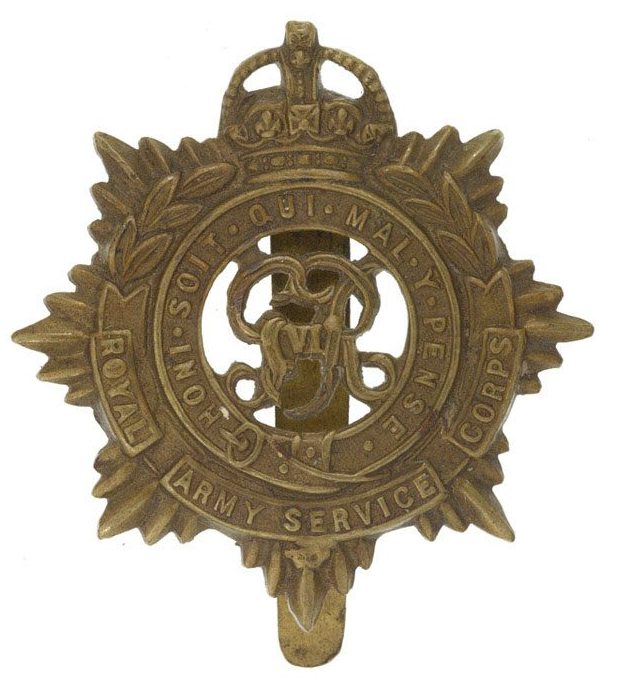Personal Details
Born: 6 August 1890 in Bilston, Staffordshire.
Family: He was the youngest of three children born to Martha Brindley, a charwoman. He married Annie Holloway in 1937 in Bilston. No children can be found for the marriage.
Residence: In 1891 and in 1901 he, his widowed mother and siblings were living at 19 Stone Street, Bilston. By 1911 he was a boarder at Poplar Cottages, 24 Angel Street, Stourbridge, Worcestershire. On his Attestation in 1915 he gave his address as 1 New Street, Whitchurch, Shropshire, but on his discharge from the Army in 1919 his address was 1 Parkfields Colliery, Wolverhampton, Staffordshire. In 1939 he and his wife were living at Oak and Ivy Inn, Oxford Street, Bilston.
Employment: In 1911 he was a bricklayer`s labourer. By 1939 he was the manager of a public house.
Died: In 1964 in Bilston, aged 73.
Military Details
Regiment: Royal Army Service Corps (previously Royal Field Artillery)
Rank: Driver
Service Number: M/398707 (previously 1904)
Date of Enlistment: 15 October 1915
Date of Discharge: 26 February 1919
Reason for Discharge: Disembodied
Samuel was awarded the Campaign Medals (British War medal and Victory medal) and the Silver War Badge (number B349055) on 24 December 1919.

The British War Medal (also known as 'Squeak') was a silver or bronze medal awarded to officers and men of the British and Imperial Forces who either entered a theatre of war or entered service overseas between 5th August 1914 and 11th November 1918 inclusive. This was later extended to services in Russia, Siberia and some other areas in 1919 and 1920. Approximately 6.5 million British War Medals were issued. Approximately 6.4 million of these were the silver versions of this medal. Around 110,000 of a bronze version were issued mainly to Chinese, Maltese and Indian Labour Corps. The front (obv or obverse) of the medal depicts the head of George V. The recipient's service number, rank, name and unit was impressed on the rim.
The Allied Victory Medal (also known as 'Wilfred') was issued by each of the allies. It was decided that each of the allies should each issue their own bronze victory medal with a similar design, similar equivalent wording and identical ribbon. The British medal was designed by W. McMillan. The front depicts a winged classical figure representing victory. Approximately 5.7 million victory medals were issued. Interestingly, eligibility for this medal was more restrictive and not everyone who received the British War Medal ('Squeak') also received the Victory Medal ('Wilfred'). However, in general, all recipients of 'Wilfred' also received 'Squeak' and all recipients of The 1914 Star or The 1914/1915 Star (also known as 'Pip') also received both 'Squeak' and 'Wilfred'. The recipient's service number, rank, name and unit was impressed on the rim.

The Silver War Badge was issued in the United Kingdom and the British Empire to service personnel who had been honourably discharged due to wounds or sickness from military service in World War I. The badge, sometimes known as the "Discharge Badge", the "Wound Badge" or "Services Rendered Badge", was first issued in September 1916, along with an official certificate of entitlement.

